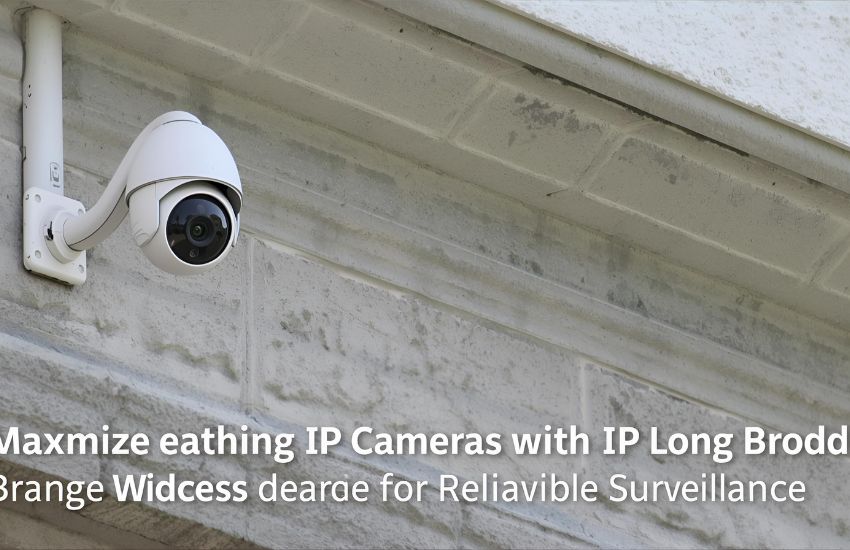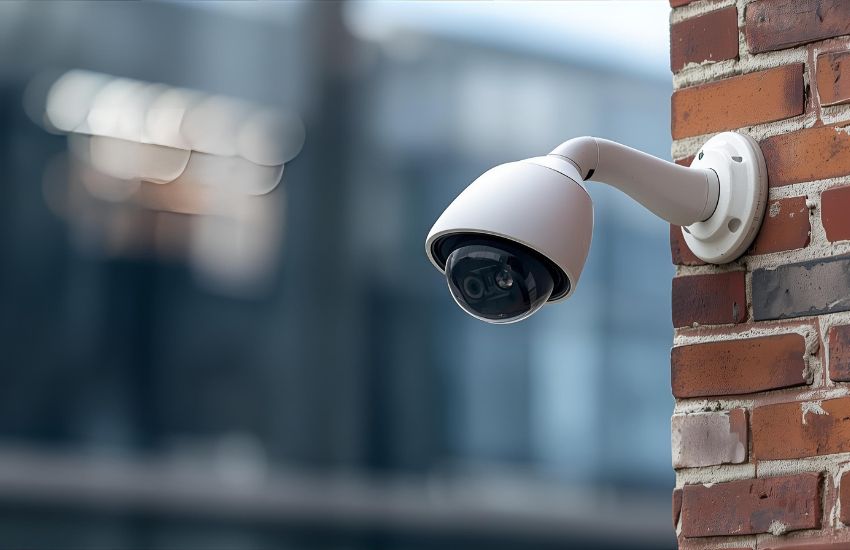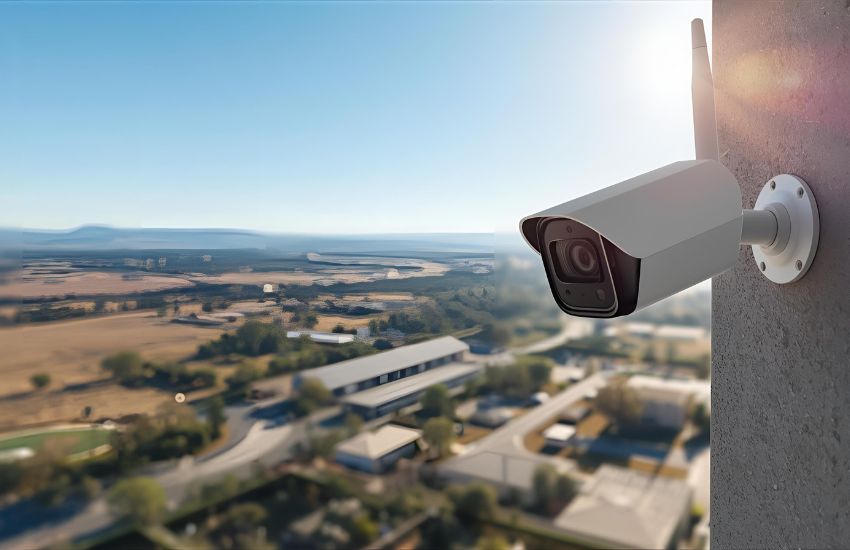Securing large properties or connecting distant buildings often presents a unique challenge—especially when running cables is costly or impractical. Yet, maintaining a reliable surveillance network in such scenarios is not only possible but also highly efficient when you use IP cameras in combination with a long-range wireless bridge system. This powerful setup allows you to transmit high-quality video signals wirelessly over impressive distances without sacrificing security or performance.
To maximize security with IP cameras using a long-range wireless bridge, install cameras at key locations and connect them to the network via the bridge for stable, extended coverage. Ensure proper line of sight between bridges, use high-gain antennas, and secure connections with encryption. This setup offers reliable surveillance across distant buildings or wide outdoor areas.
In this blog, you’ll discover how to build a high-performance security system using IP cameras and long-range wireless bridges. You’ll learn how access points, PoE switches, and proper line-of-sight placement come together to create seamless surveillance coverage without relying on wires.
Understanding IP Camera Systems and Wireless Bridge Solutions for Modern Surveillance

The Role of IP Camera Systems in Today’s Surveillance
As surveillance needs evolve, IP camera systems have become the foundation of modern security infrastructure. These systems offer high-definition video quality, remote access, and seamless integration with digital storage. Unlike traditional CCTV camera setups, IP cameras transmit data over a wireless network or Ethernet, enabling you to manage and monitor your security camera system with greater flexibility.
When you need to secure multiple buildings or wide areas without running cables, IP technology gives you a smart and scalable alternative. These wireless IP solutions are essential for businesses, farms, industrial sites, and other facilities with vast or hard-to-reach locations.
How Wireless Bridge Systems Extend Your Surveillance Reach
A wireless bridge system is a game-changing solution for connecting remote IP cameras where direct cabling is not feasible. Whether you’re linking two cameras or an entire surveillance system, this technology allows video data to travel over long distances without interruption. These systems typically rely on point-to-point or point-to-multipoint wireless bridge setups, establishing a direct line between your cameras and the central NVR or server.
Wireless bridge system options are especially useful for outdoor wireless setups where terrain, distance, or building separation prevents easy wiring. A bridge for IP cameras transmits secure, high-bandwidth signals that are ideal for real-time video surveillance across extended areas.
Cameras with Long Range Wireless for Maximum Coverage
Deploying IP cameras with long range capabilities ensures coverage across large outdoor environments. When combined with long range wireless bridge systems, these cameras enable effective monitoring of remote IP cameras with long distances from the base network. You’ll benefit from reliable connections even in challenging conditions, provided you maintain a direct line of sight between devices.
Wireless security systems designed for outdoor use often include weatherproof hardware, ensuring durability and continuous operation. This makes them an ideal choice for deploying cameras with long range wireless connections in various environmental conditions.
Making the Right Choice for Your Security Infrastructure
Choosing the right components—wireless system, IP camera systems, and the appropriate point-to-point wireless bridge—ensures a dependable and expandable solution. Whether you’re working with outdoor IP installations or securing multiple buildings, a thoughtfully designed system can help you achieve full coverage without compromising on performance.
Incorporating cameras over wireless bridge connections into your setup allows you to scale your security camera system efficiently, while experts like CCTV Camera Pros can provide reliable equipment tailored to your project’s specific needs.
See more about…360 Degree Surveillance Camera
How to Transmit Multiple IP Cameras over a Point-to-Point Wireless Bridge System

Planning Your Wireless Transmission Setup
When you’re looking to transmit multiple IP cameras across long distances, a point-to-point wireless bridge system becomes essential. This setup allows you to establish a stable wireless transmission between two fixed locations—ideal for connecting remote areas without the need for hard wired infrastructure.
Before you begin, identify the locations of your cameras and ensure there’s a clear line of sight between the transmitter and receiver antennas. Any obstruction, such as trees or buildings, can degrade the wireless signal and reduce performance. Choose high-gain WiFi antennas and reliable wireless devices rated for long-distance communication.
Connecting IP Cameras to the Wireless Network
To begin the installation, connect IP cameras installed at the remote site to a PoE switch. If your switch lacks enough PoE ports, you can use PoE injectors to power each camera individually. This setup allows for efficient power and data delivery over a single Ethernet cable. Whether you’re using standard surveillance or advanced AI security cameras, stable power and network connectivity are critical.
Your cameras to the PoE switch should be connected using shielded network cables to reduce interference. From there, link the switch to the transmitting side of the wireless bridge.
Transmitting and Receiving Video Feed
The transmitting radio sends the wireless video feed to the receiving antenna at your base location. This receiving side connects directly to a network switch or video recorder, such as an NVR (Network Video Recorder), which stores and displays the footage.
For example, if you’re working with 3 IP cameras—including a LPR camera (License Plate Recognition) or a camera mounted for facial capture—you’ll need sufficient bandwidth to avoid signal drops. The radio devices you select should match the total data throughput required for your camera types and resolutions.
Final Integration with Your Surveillance System
Once the wireless transmission is active, ensure all devices are visible to your camera NVR or NVRS. You can manage and monitor footage in real time, just as you would with a hard wired system. Use reliable Ethernet cable runs at the receiver end to maintain signal integrity from the receiving antenna to your core surveillance equipment.
See more about…IP Camera Network Traffic
Boost Outdoor Wireless Security with a Reliable Bridge for IP Cameras

Enhancing outdoor wireless security requires a solution that balances coverage, clarity, and connectivity—especially when you’re deploying multiple cameras across open or remote areas. Using a reliable bridge for IP cameras allows you to link cameras in hard-to-wire locations directly to your central NVR, maintaining seamless video surveillance without sacrificing performance.
A strong wireless bridge setup begins by choosing the right hardware to use, including high-quality transmitting and receiving antennas. For broader coverage, you may consider omnidirectional antennas, especially when you need to cover multiple directions or camera angles. For instance, if you’re deploying 3 IP cameras around a large outdoor property, each one must be connected to the transmitting antenna through a network switch, which combines their feeds into a single stream for wireless data transmission.
The network video recorder on the receiving side collects and stores footage for playback and monitoring. The NVR is also connected to your primary network infrastructure, ensuring that all video feeds are easily accessible. For specialized needs like license plate recognition, you’ll need higher-resolution cameras and a bridge system that supports stable bandwidth.
For long-term reliability, always use high-quality cables such as Cat6 for local connections, and ensure your antennas are properly aligned. Whether your goal is to get WiFi to remote locations or extend your surveillance reach, a well-structured IP camera bridge setup ensures your outdoor security remains uninterrupted, efficient, and future-ready.
See more about…IP67 Security Camera
Conclusion
In conclusion, wireless bridge solutions for IP camera deployments are a smart choice for securing remote or expansive outdoor environments. These systems offer flexible connectivity, allowing you to transmit stable, high-quality surveillance data without the need for extensive cabling. To achieve best results, ensure your cameras and bridge components are properly aligned and configured, especially when transmitting HD video. Powering your devices via Ethernet using power injectors further simplifies installation while maintaining signal integrity and reliability. With the right planning and equipment, you can build a robust, future-ready wireless surveillance system that meets both your security and operational demands.
See more about...IP Camera Alarm Output
Frequently Asked Questions (How to Maximize Security with IP Cameras with Long Range Wireless Bridge for Reliable Surveillance)
What is the maximum distance for wireless security cameras?
The maximum distance for wireless security cameras depends on the model and environment. Generally, Wi-Fi cameras have a range of 150–300 feet in open spaces, but walls, interference, and obstacles can reduce this to 50–150 feet indoors. Advanced long-range wireless cameras with external antennas can extend coverage up to 500 feet or more in optimal conditions.
How do you extend the range of a wireless security camera?
Extend a wireless security camera’s range by moving it and the router closer, raising or replacing antennas with higher-gain models, switching to 2.4 GHz, updating firmware, reducing interference (remove obstructions, change channels), adding a Wi-Fi extender, mesh system, or a dedicated wireless bridge, or using Powerline adapters and wired backhaul for reliable long-distance links.
How to connect CCTV for long distance?
To connect a CCTV camera for long-distance transmission, use a combination of high-quality coaxial or Ethernet cables, fiber optic cables, or wireless transmitters. Ensure proper signal boosters or repeaters are installed for stability. For IP cameras, connect via network switches with PoE support or use a VPN for remote access. Proper alignment and interference-free placement are crucial.
How do long range cameras work?
Long-range cameras work by using high-resolution sensors, powerful zoom lenses, and advanced image processing to capture distant objects clearly. They often include infrared or thermal technology for night vision, and optical stabilization to reduce blurring. These cameras transmit data via wired or wireless networks, enabling real-time monitoring and recording over large distances, making them ideal for security and surveillance.
